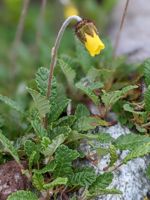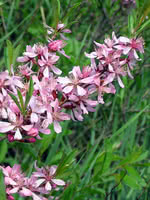Mon-Fri 9am - 5pm Mountain time
Russian Almond vs Yellow Mountain Avens
Dryas drummondii
Prunus tenella
CUSTOM GROW
Yellow Mountain Avens is a native perennial wildflower with bright yellow buttercup-like blooms. The nectar-rich flowers attract a variety of pollinators, including bees and butterflies. By thriving at higher elevations, it helps sustain pollinator populations and provides one of the earliest sources of nectar and pollen in alpine habitats. After the blooms fade, the plant produces silky seed heads that begin as upright, compact tufts and gradually expand into rounded, fluffy clusters, adding texture and interest to the landscape.
As a nitrogen-fixing plant, Yellow Mountain Avens enriches soil fertility and supports the growth of surrounding vegetation. It forms dense, spreading mats of evergreen foliage that act as a groundcover and help stabilize soil. Often among the first species to establish in disturbed alpine sites such as glacial outwash or landslides, it is well-suited for alpine revegetation, erosion control, naturalization, and ecological restoration projects in harsh, rocky environments.
Russian Almond is a low maintenance, short, slightly suckering shrub. It is covered with attractive, bright pink flowers in early spring before its foliage emerges.
This hardy species forms dense thickets attracts wildlife. Russian Almond prefers full sun and well-drained soils, but can tolerate moist soils.
The nuts it produces are quite attractive but very small. They are bitter and possibly toxic in large quantities.
Check out our YouTube channel video of the Russian Almond here.

